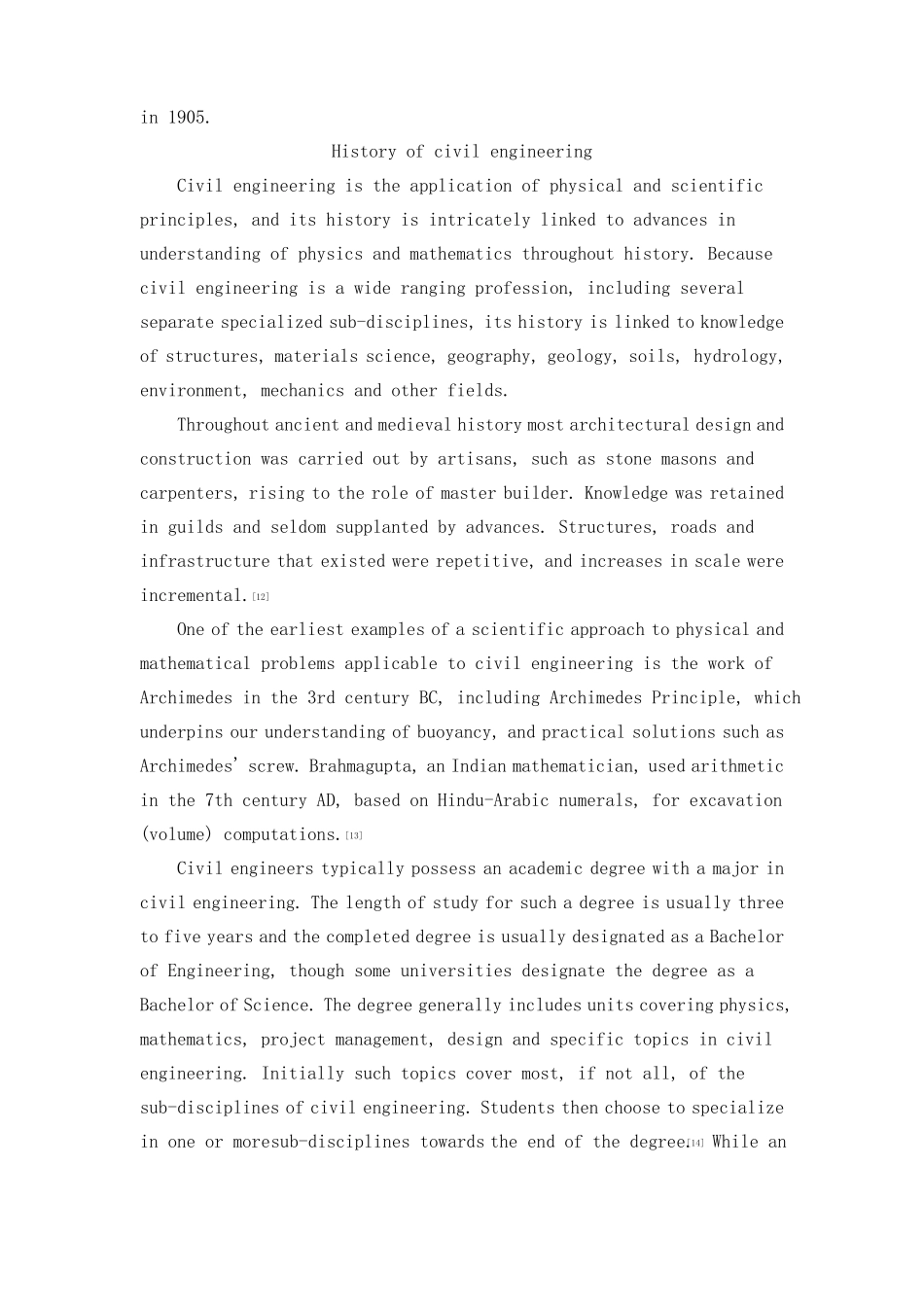Civil engineeringCivil engineering is a professional engineering discipline that dealswith the design, construction, and maintenance of the physical andnaturally built environment, including works like bridges, roads, canals,dams, and buildings.[1][2][3] Civil engineering is the oldest engineeringdisciplineaftermilitaryengineering,[4]anditwasdefinedtodistinguish non-military engineering from military engineering.[5] It istraditionallybrokenintoseveralsub-disciplinesincludingenvironmentalengineering,geotechnicalengineering,structuralengineering, transportation engineering, municipal or urban engineering,waterresourcesengineering,materialsengineering,coastalengineering,[4]surveying,andconstructionengineering.[6]Civilengineering takes place on all levels: in the public sector from municipalthrough to national governments, and in the private sector from individualhomeowners through to international companies.History of the civil engineering professionSee also: History of structural engineeringEngineering has been an aspect of life since the beginnings of humanexistence. The earliest practices of Civil engineering may have commencedbetween 4000 and 2000 BC in Ancient Egypt and Mesopotamia (Ancient Iraq)when humans started to abandon a nomadic existence, thus causing a needfor the construction of shelter. During this time, transportation becameincreasingly important leading to the development of the wheel andsailing.Until modern times there was no clear distinction between civilengineering and architecture, and the term engineer and architect weremainly geographical variations referring to the same person, often usedinterchangeably.[7]The construction of Pyramids in Egypt (circa 2700-2500BC) might be considered the first instances of large structureconstructions. Other ancient histori...


